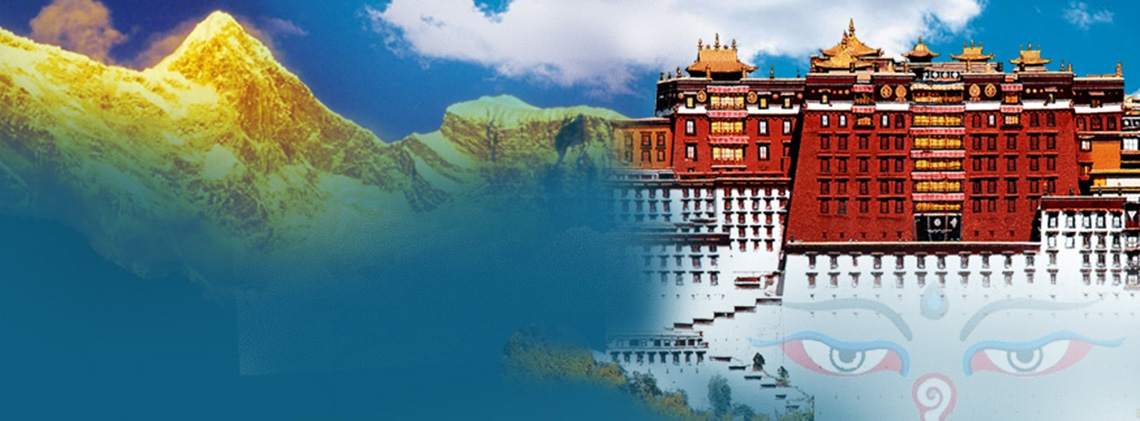
Tibet Autonomous Region
Splendid
Chi Culture
Topic
Tibet Autonomous Region
The Tibet Autonomous Region (Tibet, for short), one of five ethnic autonomous regions in China, is situated on the southwest border of China. Located in the Qinghai-Tibet Plateau, its average elevation is above four-thousand meters; for this reason, it is known as the “Roof of the World.”
Tibet borders on Xinjiang in the north, connects with Sichuan in the east, borders Qinghai in the northeast, and adjoins Yunnan in the southeast. Countries and regions sharing borders with Tibet include Myanmar, India, Bhutan, Nepal, and Kashmir. Tibet, with a land border of more than four-thousand kilometers, is an important gateway to the southwestern frontier of China.
Tibet’s high mountains and lofty ridges, desolate wilderness and lakes, and poor living environment have engendered the Tibetans’ distinctive character. Their perseverance, optimism, and open-mindedness have given Tibetan culture a kind of simple, honest, and vigorous style.
During their long history, the Tibetan people have not only had their own language and writing system, but have forged their own unique customs and habits, and created a splendid culture. Their rich cultural heritages include literature, music, dance, painting, sculpture, and architecture. In addition, Tibetan medicine is also a wonder of traditional Tibetan culture. Tibetan Buddhism, an integral part of Tibetan traditional culture, is the religion of many Tibetans. Over the long history of its development, Tibetan Buddhism has incorporated various cultural beliefs from the Han-Chinese, Indian, and others. It has had a profound influence on the life and cultural development of the Tibetan people.
Amid the tall mountains and lofty ridges of the Tibetan plateau, there are many world-renowned mountain peaks: eleven peaks rise more than eight thousand meters above sea level. The tallest one, Mt. Qomolangma (known in the West as Mt. Everest) is 8,844.43 meters above sea level and is the highest mountain in the world. Among these tall mountains, thousands of rivers flow from here: the Jinsha River, Lancang River (a.k.a. the Mekong River in Southeast Asia), Nu River (a.k.a. Salween in Southeast Asia), and Yalu Zangbu (a.k.a. Yarlung Zangbo, or Yarlu Tsangpo) River. The Nu and the Yalu Zangbu rivers also begin in the mountains here.
Given the almost completely different natural environments in which they live, each group of the Tibetan people has different living habits and modes of production. The Himalaya high mountain areas are made up of several east-west mountain ranges, the average elevation of which is about 6,000 meters. Mt. Qomolangma, bordering between China and Nepal, is the tallest mountain in the world. The peak is covered with snow year around.
The South Tibet Valley, located between the Gangdise Mountains to the north and the Himalayas to the south, encompasses the valleys of the Yalu Zangbu River and its tributaries. There are many valleys, of various sizes associated with the rivers and lake basins in this region. The flat and fertile terrain has made the South Tibet Valley the main agricultural region in Tibet, and earned it the nickname of the “Tibet Granary.” It is also one of the birthplaces of ancient Tibetan civilization.
The plateau in northern Tibet is surrounded by the Kunlun, Tanggula, Gangdise, and Nyainqêntanglha (a.k.a. Nyenchen Tanglha) mountain ranges. The rounded, flat, and gentles forms are like undulating waves. The vast expanse of the basins are the main pastoral areas in Tibet.
Across the western plateau lies the Gangdise Mountains which run in a west-east direction. Forty-six thousand meters above sea level, to the north, is a desert plateau. Although it is sparsely populated, there are numerous lakes, and it is a paradise for wildlife.
In eastern Tibet, there are many lofty mountains and canyons among the Hengduan Mountain range. The range runs from east to west, and then takes a turn and continues along a north-south axis. The mountain peaks are covered year-round in ice and snow but the hillsides have dense primeval forests and the valleys are verdant throughout the year. The Nu, Lancang and Jinsha rivers all roll through the region.



